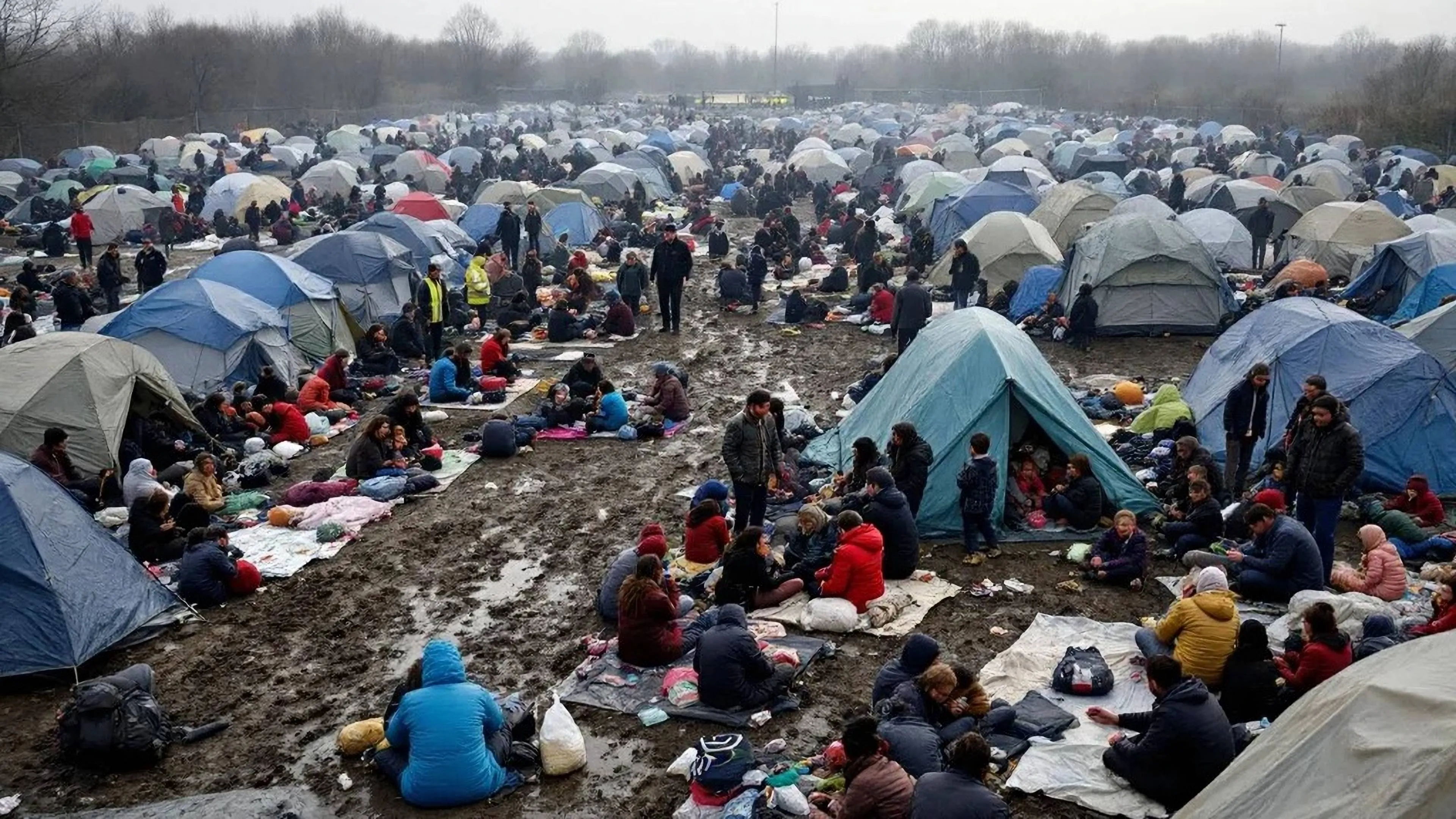Bevolkingsexplosie afgelast?
Nieuwe studie voorziet mogelijke afname wereldbevolking.
In 1968 publiceerde Paul Ehrlich (Stanford) zijn bestseller, 'The Population Bomb', waarin hij hel en verdoemenis aankondigde: massale hongersnoden, grote sociale onrust en ecologische rampspoed. Volgens Ehrlich was de draagkracht van de aarde onvoldoende om alle monden te voeden. Hij bepleitte onmiddellijk actie om de bevolkingsgroei te beperken.
'The Population Bomb' begon met de volgende openingszin: 'The battle to feed all of humanity is over. In the 1970s hundreds of millions of people will starve to death in spite of any crash programs embarked upon now. At this late date nothing can prevent a substantial increase in the world death rate '
Het liep gelukkig anders.
Een van belangrijkste critici van Ehrlich was Julian Simon, een econoom (Maryland), die verschillende boeken had geschreven over het bevolkingsvraagstuk en aanverwante problemen. Zijn laatste boek, dat na zijn dood werd uitgegeven, is 'Hoodwinking the Nation'. Hierin nam hij stelling tegen de onheilsprofetieën van Ehrlich en diens geestverwanten. Volgens Simon verkondigden die allemaal maar onzin.
Na zoveel jaren is duidelijk geworden dat Simon in vele opzichten gelijk had. Toch heeft hij bij zijn leven daarvoor nauwelijks waardering geoogst vanuit academia. De misantroop Paul Ehrlich, die uiteindelijk aan het kortste eind trok, is daarentegen met eerbewijzen overladen.
Dit is opnieuw een waarschuwing dat men uiterst wantrouwend dient te zijn ten aanzien van 'consensus' in de wetenschap!
Maar wat zijn nu de nieuwste projecties van de toekomstige ontwikkeling van de wereldbevolking? Onder de titel, 'The Looming Population Implosion', rapporteerde Science 2.0 over de nieuwste bevolkingsprognoses.
De VN doet traditioneel actief mee aan het verspreiden van allerlei doemverhalen over de toekomst van de wereld, in het bijzonder ten aanzien van klimaat. Maar dat geldt niet voor de bevolkingsprognoses. Op dat terrein publiceert het rapporten die n.m.m. evenwichtig en degelijk zijn. De nieuwe projecties sporen dan ook met die van de VN (zie grafiek aan het eind).
A model based on global population data spanning the years from 1900 to 2010 has caused a research team to predict the opposite of what Doomsday Prophets of the 1960s and beyond insisted would happen - the number of people on Earth will stabilize around the middle of the century and perhaps even start to decline.
The results coincide with the United Nation's downward estimates, which claim that by 2100 Earth's population will be 6.2 billion, if low fertility and birth rate continues on its current path, below the 7 billion we are at now.
The numerical model developed by a team from the Autonomous University of Madrid (UAM) and the CEU-San Pablo University seems to confirm the lower estimate, in addition to a standstill and even a slight drop in the number of people on Earth by the mid-21st century. The population prospects between 1950 and 2100 provided by the UN were used to conduct the analysis published in the journal Simulation. ...
The team considered the Earth as a closed and finite system where the migration of people within the system has no impact and where the fundamental principle of the conservation of mass biomass in this case and energy is fulfilled. "Within this general principle, the variables that limit the upper and lower zone of the system's two levels are the birth and mortality rates," Muñoz pointed out and recalled the change that occurred in the ratio between the two variables throughout the last century. "We started with a general situation where both the birth rate and mortality rate were high, with slow growth favouring the former," he added, "but the mortality rate fell sharply in the second half of the 20th century as a result of advances in healthcare and increased life expectancy and it seemed that the population would grow a lot.
However, the past three decades have also seen a steep drop-off in the number of children being born worldwide." The model's S-shaped sigmoid curve reflects this situation with an inflection point in the mid-1980s when the speed at which the population is growing starts to slow down until it stabilises around 2050. The data also reflect the downward trend in the UN's series of prospects. "Overpopulation was a spectre in the 1960s and 70s but historically the UN's low fertility variant forecasts have been fulfilled," Muñoz highlighted. As recently as 1992 it was predicted that there would be 7.17 billion people on Earth by 2010 instead of the actual 6.8 billion. In fact, the fertility rate has fallen by more than 40% since 1950. "This work is another aspect to be taken into consideration in the debate, although we do not deal with the significant economic, demographic and political consequences that the stabilisation and aging of the world population could entail," the researcher concluded.
Lees verder hier.
Hoe het ook zij, het lijkt mij een verheugende ontwikkeling. Maar eerst zien en dan geloven.
Voor mijn eerdere DDS-bijdragen zie hier.
Ga verder met lezen
Dit vind je misschien ook leuk
Laat mensen jouw mening weten
Lees ook
Loading


